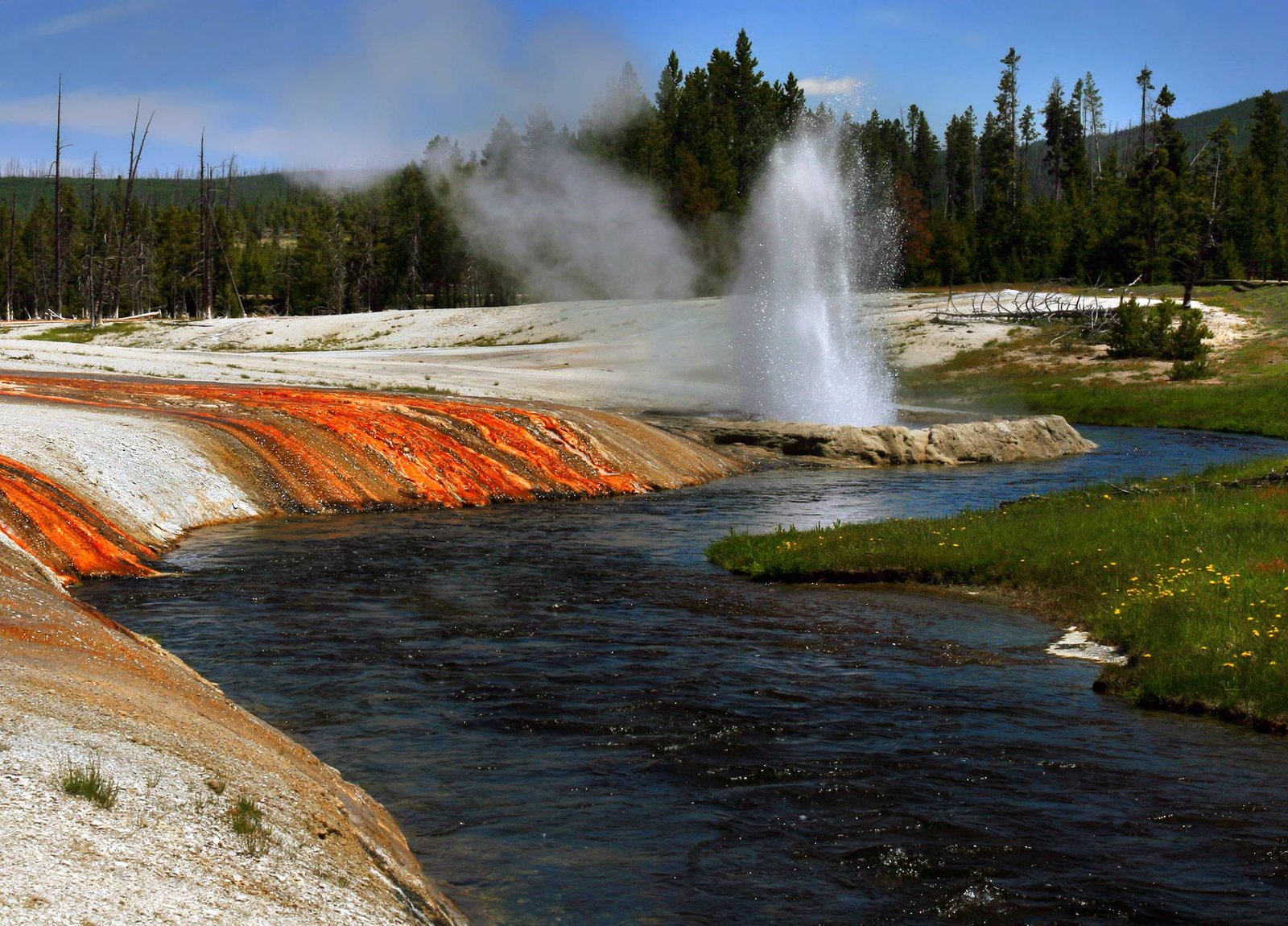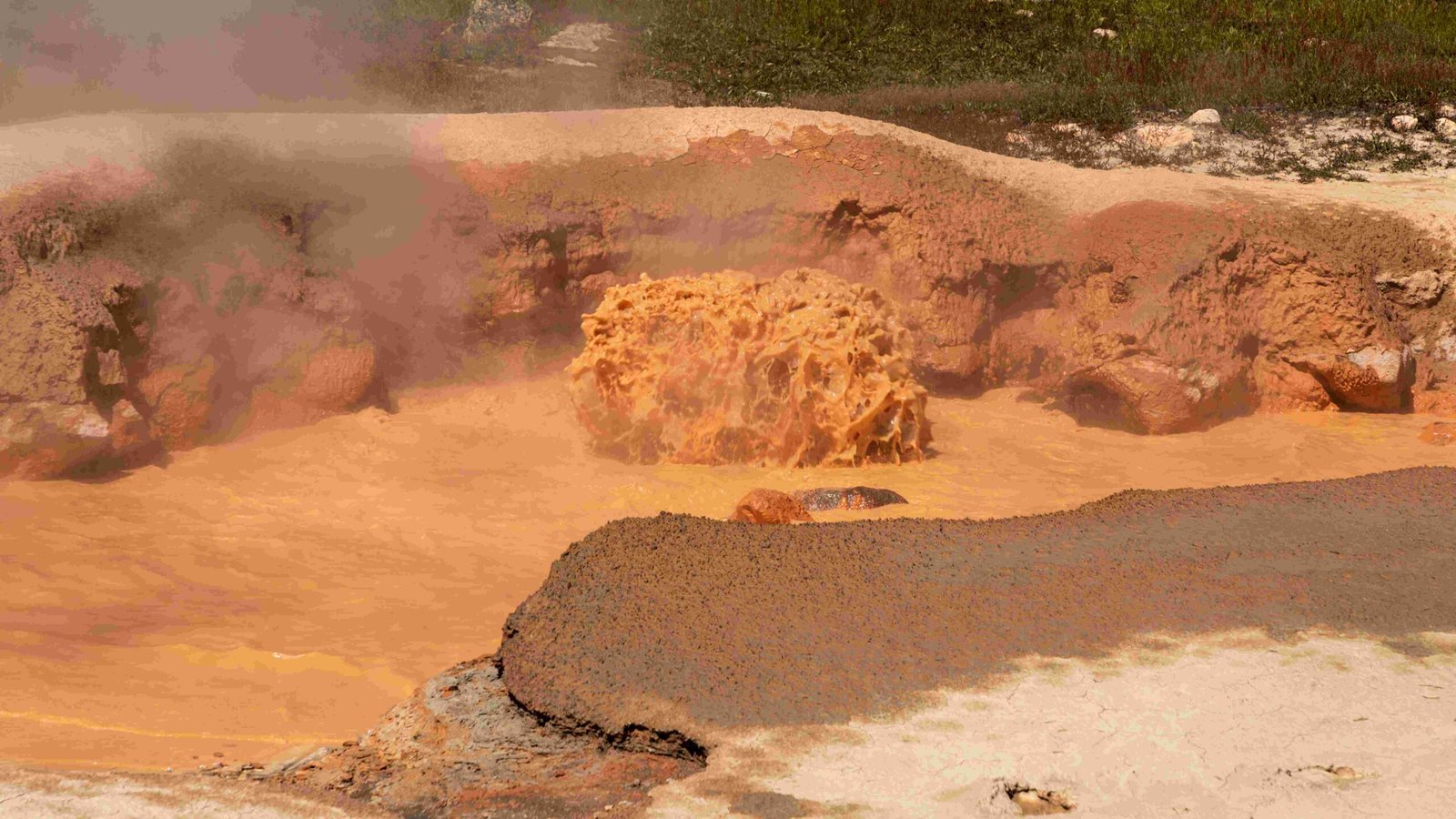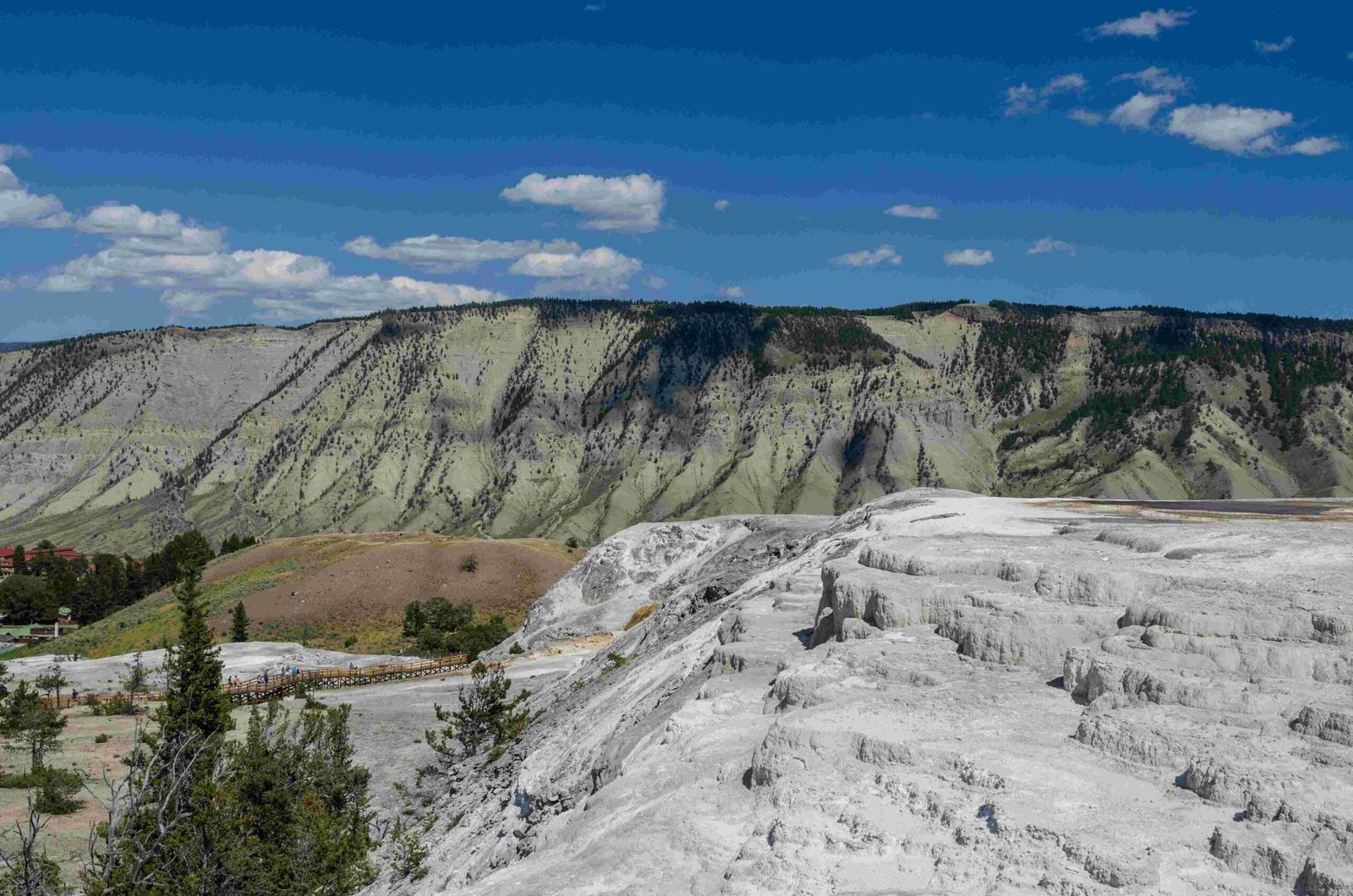The colors of thermal pools at Yellowstone National Park are a mesmerizing display of nature’s artistry. These vibrant hues range from deep blues to fiery oranges, each shade telling a story of microbial life and geothermal activity. The interplay of heat, light, and microorganisms creates a living palette that changes with temperature and depth, making Yellowstone’s thermal features a unique and ever-evolving natural wonder.
What Causes the Vibrant Colors in Yellowstone’s Thermal Pools?

The striking colors of Yellowstone’s thermal pools are primarily the result of two factors:
- Microbial communities
- Light interaction with water
Microbial Communities
Different species of thermophilic (heat-loving) microorganisms thrive at various temperatures within the pools. These microbes form mats that contribute to the pools’ colors:
- Yellow, orange, and brown: Caused by bacteria that thrive in temperatures between 140°F and 179°F (60°C to 81°C)
- Green: Produced by photosynthetic bacteria living in slightly cooler waters
- Pink to red: Result from pigments in certain bacteria and algae
Light Interaction
The way light interacts with the water also plays a crucial role:
- Blue: Seen in the deepest, hottest parts of the pools due to the scattering of light in pure water
- Green: Occurs when yellow light from sulfur combines with the natural blue of the water
How Do Temperature and Depth Affect the Colors?

Temperature and depth are key factors in determining the colors of Yellowstone’s thermal pools:
-
Temperature Gradient: As you move from the center of a pool to its edges, the temperature decreases, allowing different microbial species to thrive in concentric rings.
-
Depth Effect: Deeper areas appear blue due to light scattering, while shallower areas showcase the colors of microbial mats.
| Temperature Range | Dominant Color | Microbial Activity |
|---|---|---|
| >199°F (93°C) | Deep Blue | Minimal microbial life |
| 167-199°F (75-93°C) | Blue-Green | Some thermophiles |
| 140-167°F (60-75°C) | Green-Yellow | Diverse microbial mats |
| <140°F (60°C) | Orange-Brown | Rich microbial diversity |
Which Thermal Pools Are Most Famous for Their Colors?
Several thermal features in Yellowstone are renowned for their spectacular colors:
-
Grand Prismatic Spring: The largest hot spring in the United States, it displays a rainbow of colors from blue in the center to orange at the edges.
-
Morning Glory Pool: Once a deep blue, it now shows a gradient of yellow, green, and blue due to temperature changes caused by human interference.
-
Sapphire Pool: Known for its clear, sapphire-blue waters.
-
Emerald Pool: True to its name, it exhibits a beautiful emerald green color.
How Have Human Activities Affected the Colors of Thermal Pools?
Human activities have had significant impacts on the colors of some thermal pools:
- Debris Throwing: Objects thrown into pools can clog vents, reducing water temperature and altering microbial compositions.
- Morning Glory Pool: Its color has changed from predominantly blue to a mix of yellow, green, and orange due to cooling caused by debris.
- Increased Tourism: Foot traffic and pollution can indirectly affect the delicate balance of thermal ecosystems.
What Can Visitors Do to Preserve the Colors of Thermal Pools?
To help preserve the natural beauty of Yellowstone’s thermal pools:
- Stay on designated boardwalks and trails
- Never throw objects into the pools
- Respect park regulations and wildlife
- Participate in guided tours to learn about conservation efforts
How Can One Best Observe and Photograph the Colors?
To fully appreciate and capture the colors of Yellowstone’s thermal pools:
- Visit at Different Times: Colors can appear more vibrant in early morning or late afternoon light.
- Use Polarizing Filters: These can help reduce glare and enhance colors when photographing.
- Observe from Multiple Angles: Colors can change depending on your viewing position.
- Join Ranger-Led Programs: These provide insights into the science behind the colors.
Are There Seasonal Changes in the Colors of Thermal Pools?
While the basic color patterns remain consistent, some seasonal variations can occur:
- Winter: Steam and frost can create unique visual effects
- Spring: Increased water flow may slightly alter colors
- Summer: Peak microbial activity can intensify colors
- Fall: Changing light conditions can affect color perception
What Scientific Research Is Being Conducted on Thermal Pool Colors?
Ongoing research at Yellowstone’s thermal pools includes:
- Studying extremophile microorganisms and their potential applications in biotechnology
- Monitoring color changes as indicators of ecosystem health
- Investigating the impact of climate change on thermal features
- Developing new methods for non-invasive analysis of microbial communities
The colors of thermal pools at Yellowstone National Park continue to captivate visitors and scientists alike, offering a window into the complex interplay of geology, biology, and physics in these unique ecosystems.

